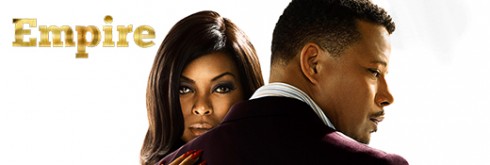This year’s Personalities of the Year, Gary Newman and Dana Walden (interviewed today by Anna Carugati, group editorial director of World Screen), were named Presidents of 20th Century Fox Television in 1999. In 15 years, the company’s become a powerhouse content provider that dominates awards races and broken new business models.
In July 2014, they were named Chairmen and CEOs of the Fox Television Group, which added the Fox network to their portfolio. The network launched hit drama Gotham, comedy The Last Man On Earth, and Empire, the No. 1 show on broadcast and the highest-rated broadcast drama in seven years.
At the studio, Walden and Newman are responsible for the hits Modern Family—which made history with its fifth consecutive Emmy for Outstanding Comedy Series—global sensation 24, and Homeland, which took home the Golden Globe and multiple Emmys for best drama.
They recently created the industry’s largest cable production unit, Fox 21 Television Studios, which, in addition to Homeland, produces 19 series, including The Americans and the anticipated American Crime Story: The People v O.J. Simpson. The studio’s content now reaches more than a billion people every day in 180 countries, six continents, and 30 different languages.
Carugati began by asking how they’ve weathered the dramatic changes to the industry in the past handful of years.
« It’s gotten harder in many ways; the bar is very high, » said Walden. « You used to be able to have a show that was a mid-range performer and it would perform fine; this is no longer the case. This is a hits-driven business. »
« I started coming to this market in the mid-’90s, » said Newman. « We learned quickly we had an insular view of the business back in LA.” So they started learning from what clients said worked in their markets. “We’re still programming in the US market and we have to concern ourselves with that, but around the edges we might hear an idea that may impact our decision at home.”
One thing is certain: « The great shows work all over the world. The exception is one or two markets where something doesn’t work; otherwise, Ally McBeals, Prison Breaks, 24s, they work all over, » Newman said.
Carugati then asked how they feel about risk.
« Risk is what we’ve embraced most, » Walden said. « Playing it safe is not a winning strategy; it won’t give us a library that stands out. » She went on to say that great content « has to be loud. It has to be bold. It has to be distinctive. »
To illustrate, she talked about the way they feel when someone like Seth MacFarland, creator of Family Guy, comes in to pitch. « They’ll pitch something where you feel mildly stressed out: This could be a mildly disastrous idea, or a big hit. You have to embrace that feeling. Push content as far as possible. Those have been our greatest successes, » Walden said.
Carugati asked how they’re managing the union of both a network and a studio.
« Our objective, when we took this job, was to keep both companies individual, » said Walden. « We were not interested in corrupting either of the cultures or merging them; they are aligned companies, they have not been merged. The studio is in one Fox lot and the network in another, and Gary and I travel back and forth. »
The intention is to help people « feel like they’re in an environment where they’re not walking down halls past the executives » of the other team, she added.
Newman also talked about on-demand viewing and the role it has to play in their lineup.
« If you believe in the show, you have to give it an opportunity to connect with the audience, » he said. Often when they put a show on-demand first, it’s « maybe evidence the show is not a priority. But over time, people fall in love with the series, and that priority begins to change. And if people are watching in a measured time period—three days or more typically seven days—we’re monetising that with our advertisers. »
Still, same-day live views remain the best financial model. As people delay, it becomes more complicated to advertise. « But people who watch in the next three to seven days are just as valuable, » said Newman.
« People think networks have quick trigger fingers to kill shows; I actually think the opposite is true. » The trick, he said, is allowing people to aggregate around a property.
Asked their secret to success, Walden replied, « There’s no one size fits all in development; we’re very honest with our creators. We talk about what shows travel best, what works in international markets, and we educate our writers. But we don’t force them to adopt an idea. »
Instead, the team focuses on helping them « monetise their art: Which are the most successful paths to doing that, and which paths will be filled with obstacles, » said Walden. « It’s about relationships, trusting each other, our partners being prepared to hear the truth. »
She pointed to a number of familiar shows that have benefited from this process. « When you look at shows like Modern Family, Glee, or How I Met Your Mother, you see so much of those creators’ lives and themselves in those characters. It typically results in a special experience for a viewer. »
Carugati then asked, « How did Empire happen? »
« [Producer] Brian Grazer had a real interest in exploring the hip hop world, » said Newman, and he brought together Lee Daniels, who wrote The Butler, and a writer from Precious, to create a « Dynasty for the hip-hop world. »
« They came in and pitched the most specific characters in what felt like an incredibly authentic world, » Newman went on. « While it was heightened, at its core it was very grounded in authenticity. The characters were so personal to Lee in particular; it was just one of those magical pitches where you could play the show with your mind. »
He added, « We didn’t know for sure what we had. Along with Kevin Reilly, running the network, we decided not to rush it for fall but to take our time with it. Making the music was time-consuming to create. We put together a big, great marketing campaign, led by Joe Earley, and I think they really got what that show was about. »
« On Empire, the first images they came to us with were pictures of the family with rap chains, » Walden revealed. « It was a way to go with the show—you could see the billboard—but we challenged them to go back and focus on this prestigious group of talent that’s come together. With this phenomenal group, bring me back the key art that says that. And it was that image of Terrence and Taraji. That’s the kind of scrutiny necessary at every level of the campaign. It makes a sparkly, attention-getting, high-prestige message. »
The results spoke for themselves.
« It was extraordinary in multi-platform: 26-30m people watching one show, » Walden said. « And before the show premiered, people were catching up on Hulu, Fox Now, various catchup platforms: 400,000 people a week. »
« What alchemy has to occur for you to bring something back, » like 24 or X Files? Carugati asked.
« An extensive show library gives people a chance to rediscover an old show and create a new appetite, » explained Walden, who said it’s all about « if the creators still have great stories to tell. Those characters »—referring to The X-Files— »when they’re reunited, it’s such a gratifying moment. If it feels like the story is not fully told, we’re definitely gonna move forward with those projects. »
« The first one we bring back was Family Guy, » said Newman. « Seth MacFarland would come in once every two weeks to ask ‘can we get back into production?’. It was almost to make him stop that we brought that series back! »
On producing for cable, Newman said, « Cable networks get attracted to the most distinct, unique programming. We’re lucky to have a sister division in FX. In both our businesses, cable and broadcast, we’re all about the creators. We tell them to dream their biggest idea. If it’s right for broadcast, fantastic. If it’s right for cable, we’ll support that. »
What they’re looking for are « specific, unique things that aren’t really on TV, » and that’s how they were able to support projects like Sons of Anarchy and Homeland, as well as more mainstream titles like Modern Family, Glee and Empire.
« There’s room for all of it, but they all start with supporting the vision of great creators and trying to allow them to stay with as pure a vision as possible, » said Newman.
« There’s no one-size-fits all. These are dynamic projects. It’s not easy to say there’s a formula, » Walden emphasised.
Perhaps thinking about producer Mark Gordon’s conviction about procedurals, which he talked about yesterday, Carugati asked whether they believe the age of the procedural is over in the US.
« I don’t think any type of programming is over, » said Newman. « These things tend to go in cycles. The procedural was so successful in the US it’s inevitable that people will get a little tired. » But he also says they’re always looking for a writer with a great procedural that recreates the genre.
« Our signature procedure’s been Bones, which has been on for 11 seasons. It’s still going strong. So we’re very interested, and we hear about it all the time from buyers. While they love and admire our serialised shows, a lot of audiences are more comfortable with episodic formats. »
To that end, they just launched Rosewood, « which has a similar DNA to Bones: Two great male/female leads, quite a bit of banter, based in a world of science, » said Newman.
« We asked Ryan Murphy to come up with a procedural this year, » Walden revealed. Though Murphy is best known for creations like Glee and American Horror Story, he’s written one procedural before: Nip/Tuck, which Walden confesses she loved.
« It’s interesting to come to a creator who’s done mostly comedy, and put them in a genre where they’re not 100% comfortable, but they want to be in that space. We’ll see what he comes up with. »
Lastly, Carugati asked the question on all our minds: How did their unique partnership come about? « There are so many marriages that don’t last nearly as long as you’ve been together! » she joked.
« Long partnerships are part of my DNA, » Walden quipped, adding that though she’s worked with Newman for 16 years, she’s been with her husband for 20.
Then she explained. When she began this executive trajectory, Fox needed strong studio leadership. « My background was exclusively marketing and creative; Gary was more business. He also had more familiarity with the broader organisation. It was Peter [Rice]’s idea to put us together and see if our combined skills » would produce something better.
« There were growing pains, » she admitted. « Over time what we found was there was so much benefit to having a partner. Decision-making, running the business, seeing the future, managing personalities in our organisation, all benefited from both our points of view. Over the first five or six years, both of us were fluent enough to oversee the entire organisation alone. But at that point it was such a gratifying and fantastic partnership that enabled both of us to cover so much territory, learn so much about the business, hire the best people in the industry. »
It was also great to have someone to lean on for stress-management. « »When you have one moment and there’s pressure or stress or tension in an organisation, and there’s one person where you can close the door and sit in a room with and strategise—it can’t be your subordinate or your superior—great results come out of that room. Gary is thoughtful, forward thinking, a great strategic executive. He balances my more impulsive side. The two together let us have all aspects of what you want in leaders. »
« In a business where there’s so much failure, it’s nice to have someone at your side to shoulder that failure, » Newman added. « And when there’s a success, there’s plenty of credit to go around. I prefer to have a partnership. »
But it’s also something you have to commit to: « Inevitably, like any people, you’ll make mistakes or frustrate someone else. You need to have a commitment to wanting to make it work and have some goodwill. I’ve loved working with Dana. »





